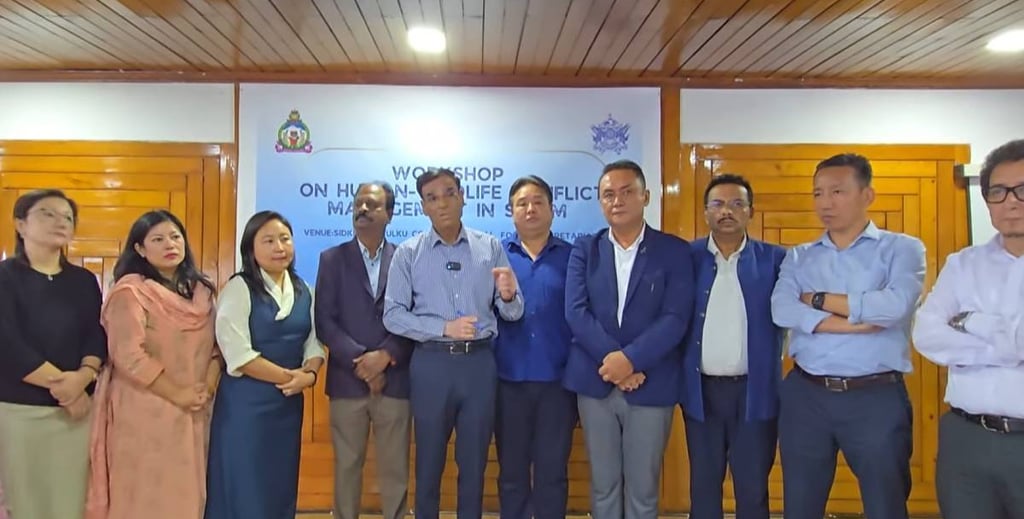Sikkim launches action plan to tackle human-wildlife conflict; workshop sets stage for satewide strategy
A detailed presentation by Mr. Manjunatha highlighted the key areas of conflict, focusing on crop damage, livestock predation, and the increasing proximity of wildlife to human habitation.
LOCAL


Forest and Environment Department of Sikkim on July 30 organized a comprehensive one-day workshop on “Human-Wildlife Conflict Management in Sikkim” at the Forest Secretariat, Deorali. The initiative marks a critical first step towards a coordinated state-wide response aimed at protecting both communities and biodiversity.
The workshop followed a high-level meeting held on July 16 at Samman Bhawan, which was chaired by Chief Minister Prem Singh Tamang. That meeting spotlighted the growing challenges caused by wildlife straying into human settlements, damaging crops, and in some cases, attacking people. The July 30 workshop represents the first operational phase of a larger government initiative to develop practical, locally informed, and sustainable solutions.
Presiding over the workshop, Principal Secretary-cum-Principal Chief Conservator of Forests (PCCF) Dr. Pradeep Kumar underlined the urgency of inter-departmental cooperation. “This is not a forest department issue alone. The solution requires collective effort from agriculture, rural development, local bodies, and most importantly, the people on the ground,” he said.
Among the dignitaries present were Principal Director of Agriculture, Tshering Thendup Bhutia; Chief Engineer of the Rural Development Department, Rinzing D. Gyaltsen; and Chief Wildlife Warden, D. Manjunatha, IFS. The event drew participation from a wide cross-section of officials, including divisional forest officers (DFOs), range officers (ROs), panchayat members, SARAH representatives, and field staff from protected areas.
A detailed presentation by Mr. Manjunatha highlighted the key areas of conflict, focusing on crop damage, livestock predation, and the increasing proximity of wildlife to human habitation. Technological interventions like solar-powered fencing, artificial intelligence-based monitoring systems, and the use of enclosed greenhouses were suggested as viable solutions. The proposals were met with interest, especially from participants representing sanctuary zones who shared field-level observations and constraints.
Dr. Kumar responded to these concerns with policy-level clarifications and mentioned that a framework for compensation, rapid response teams, and preventive infrastructure is being prepared. He assured participants that their feedback would inform upcoming government guidelines. “We are committed to making this a two-way dialogue and translating these discussions into real change,” he added.
